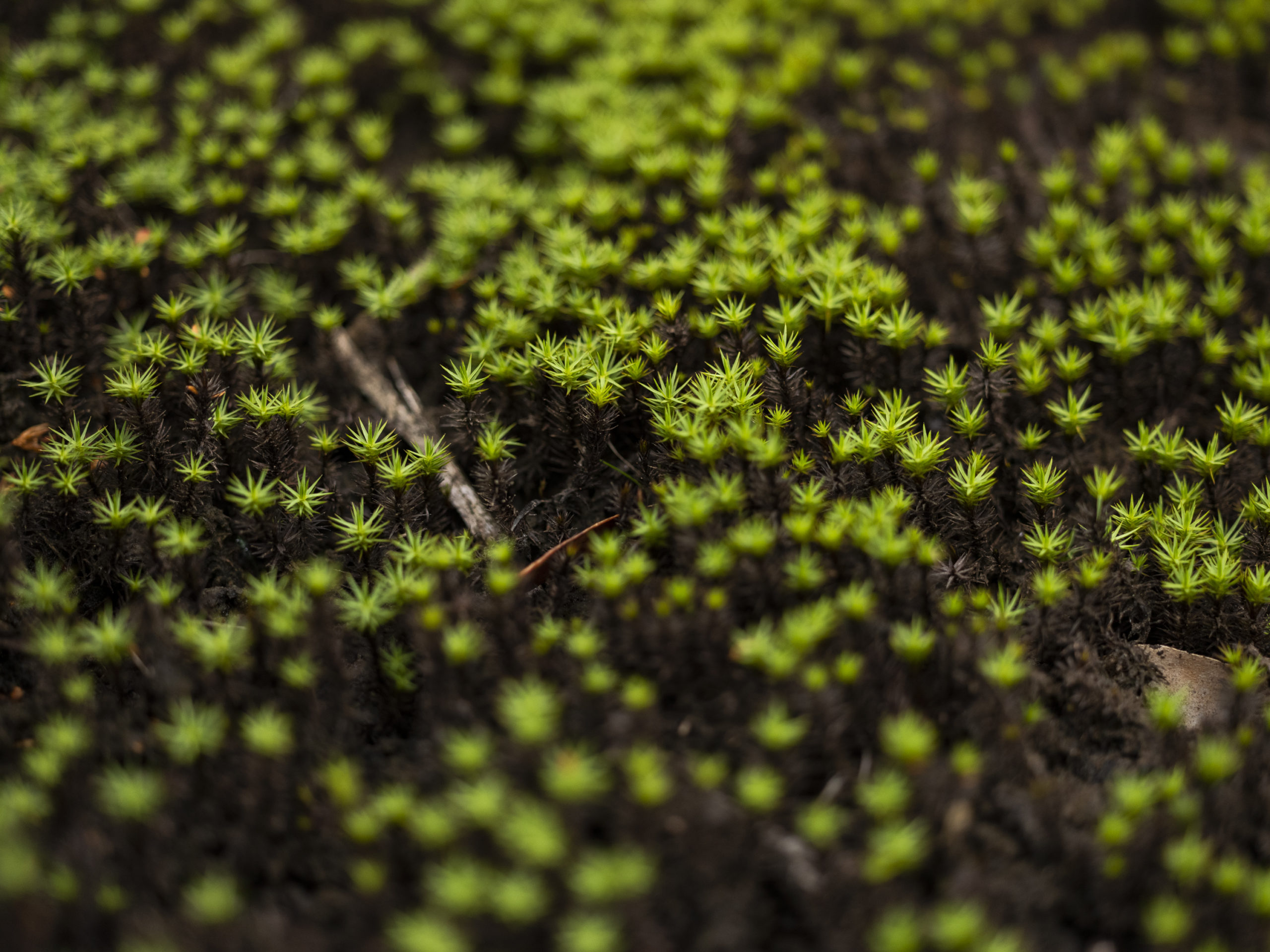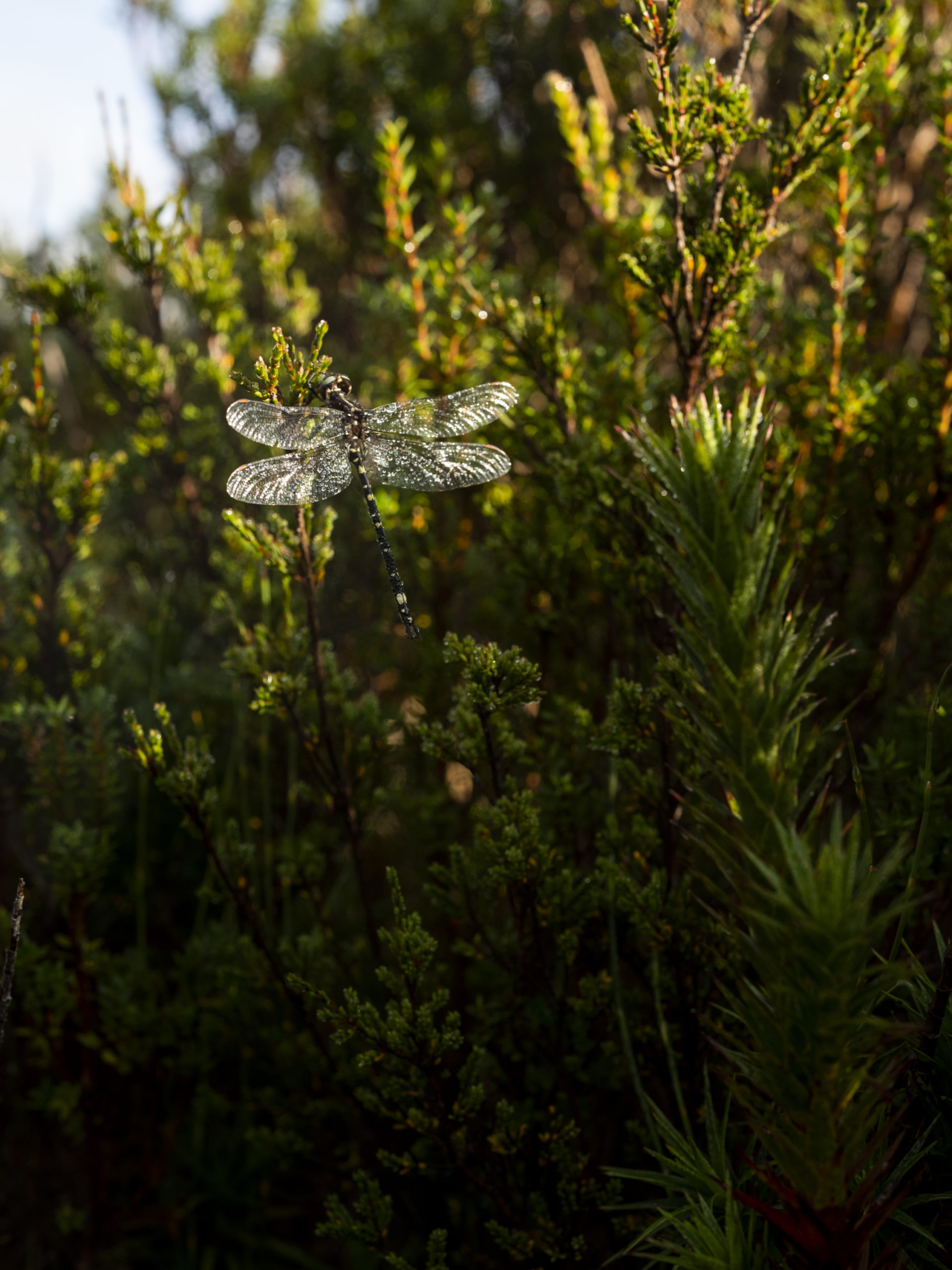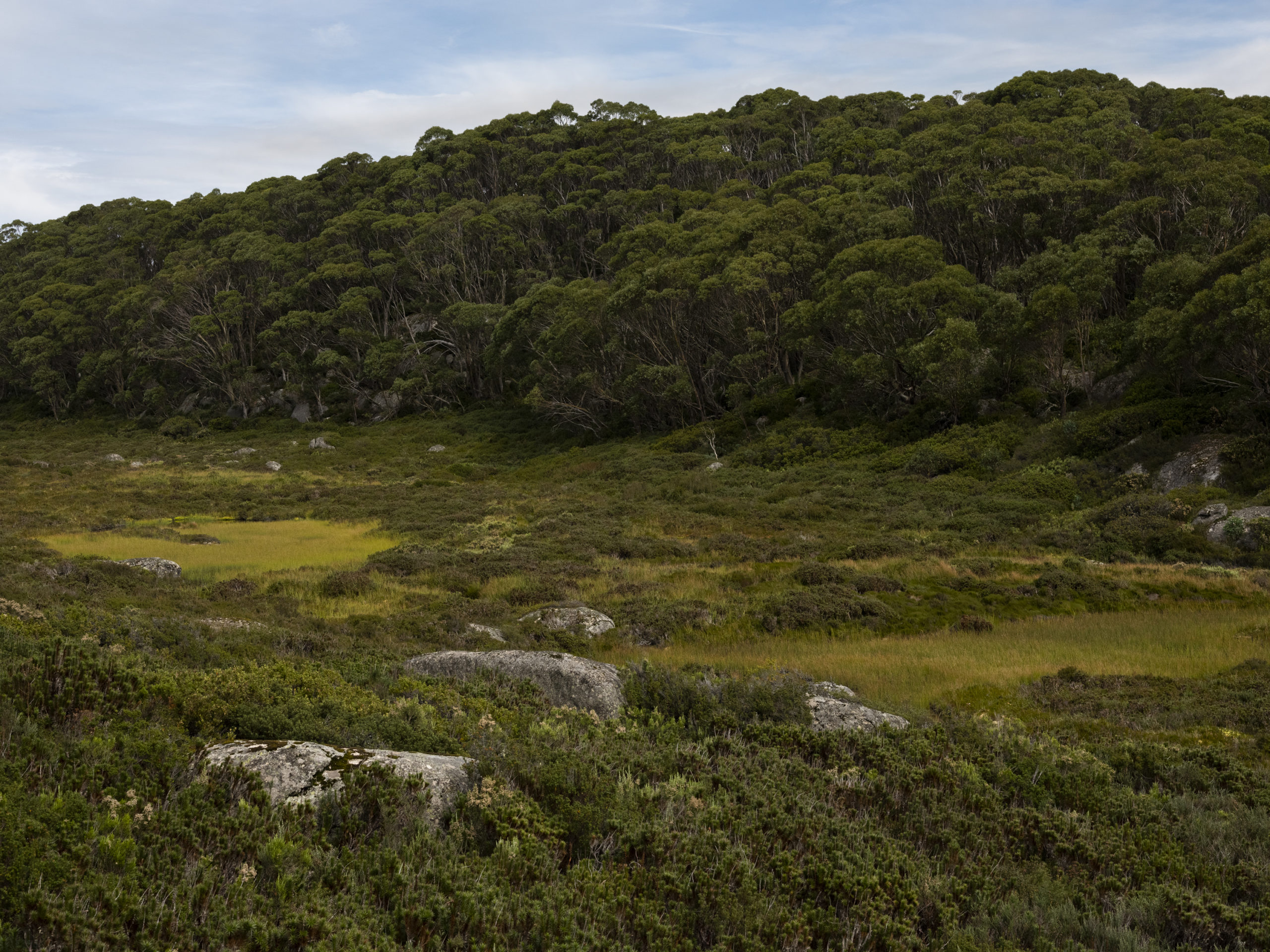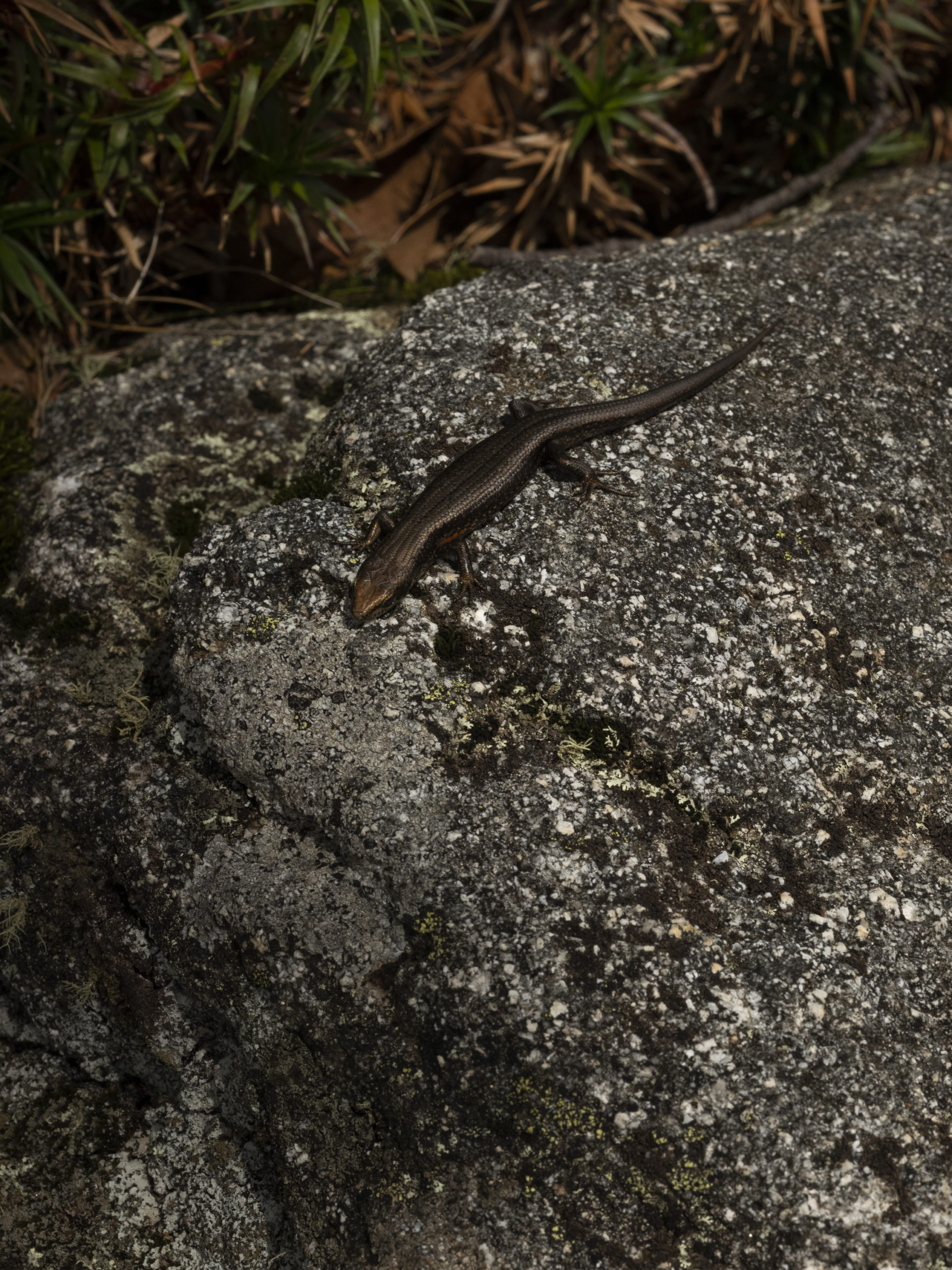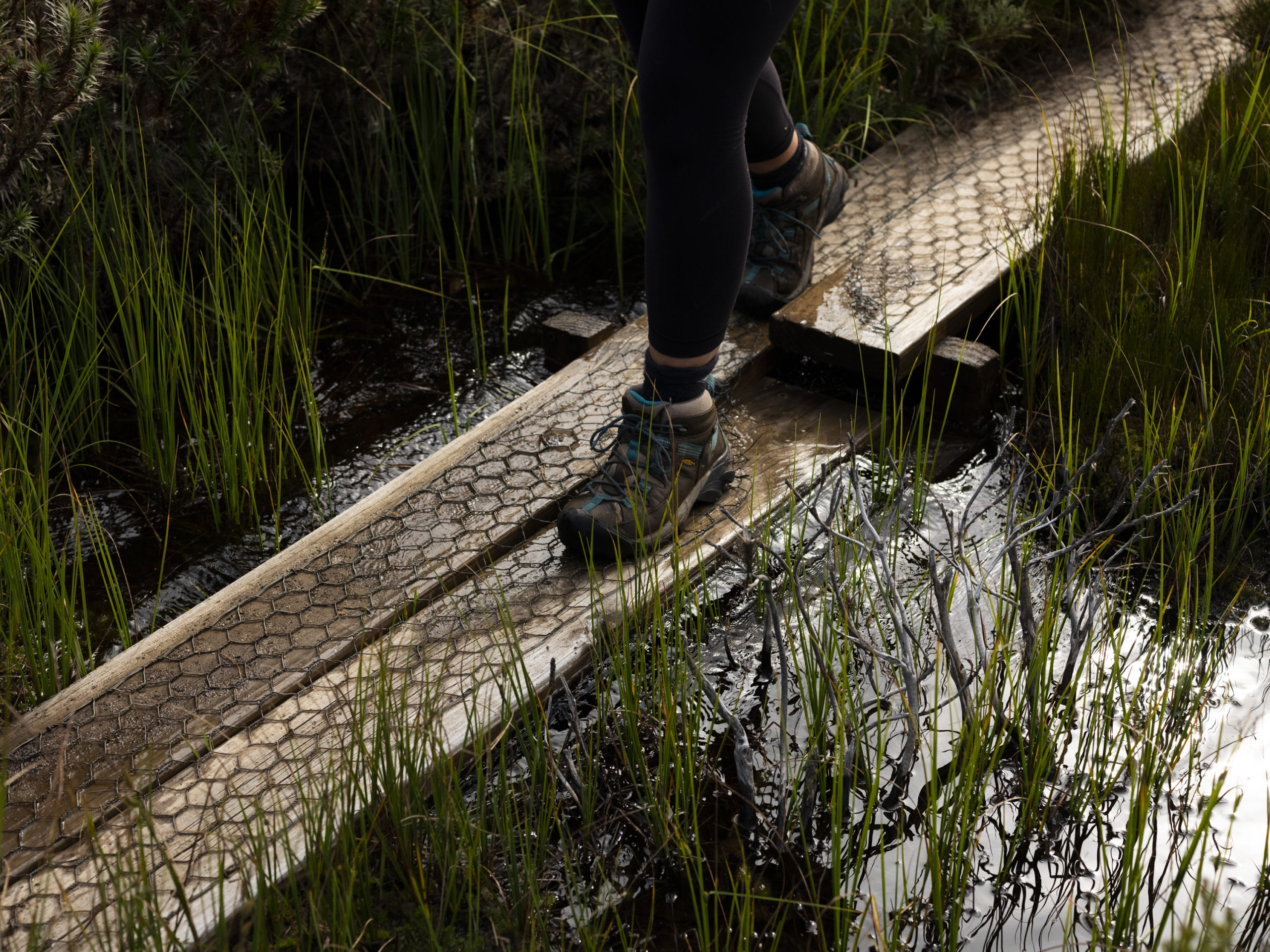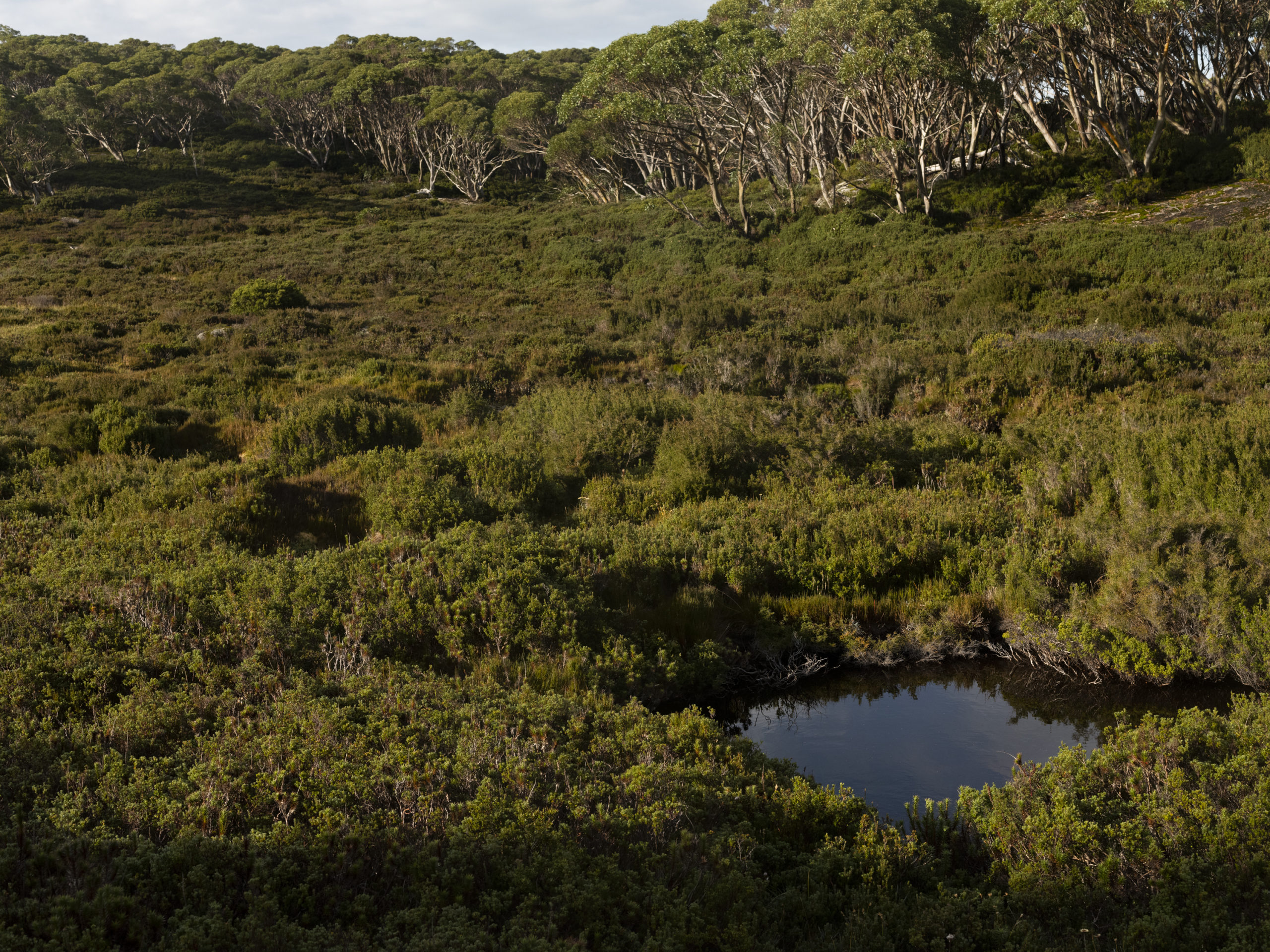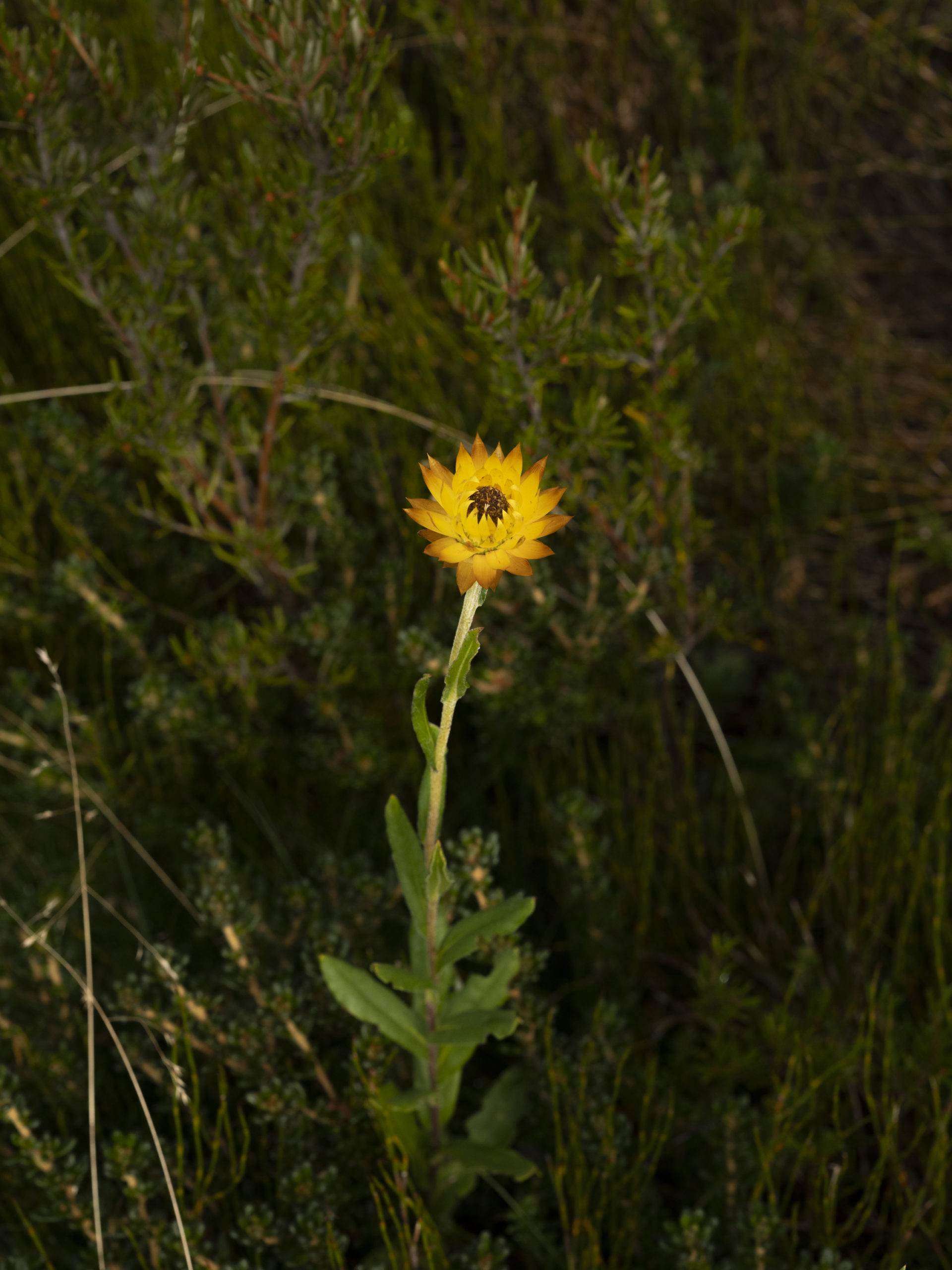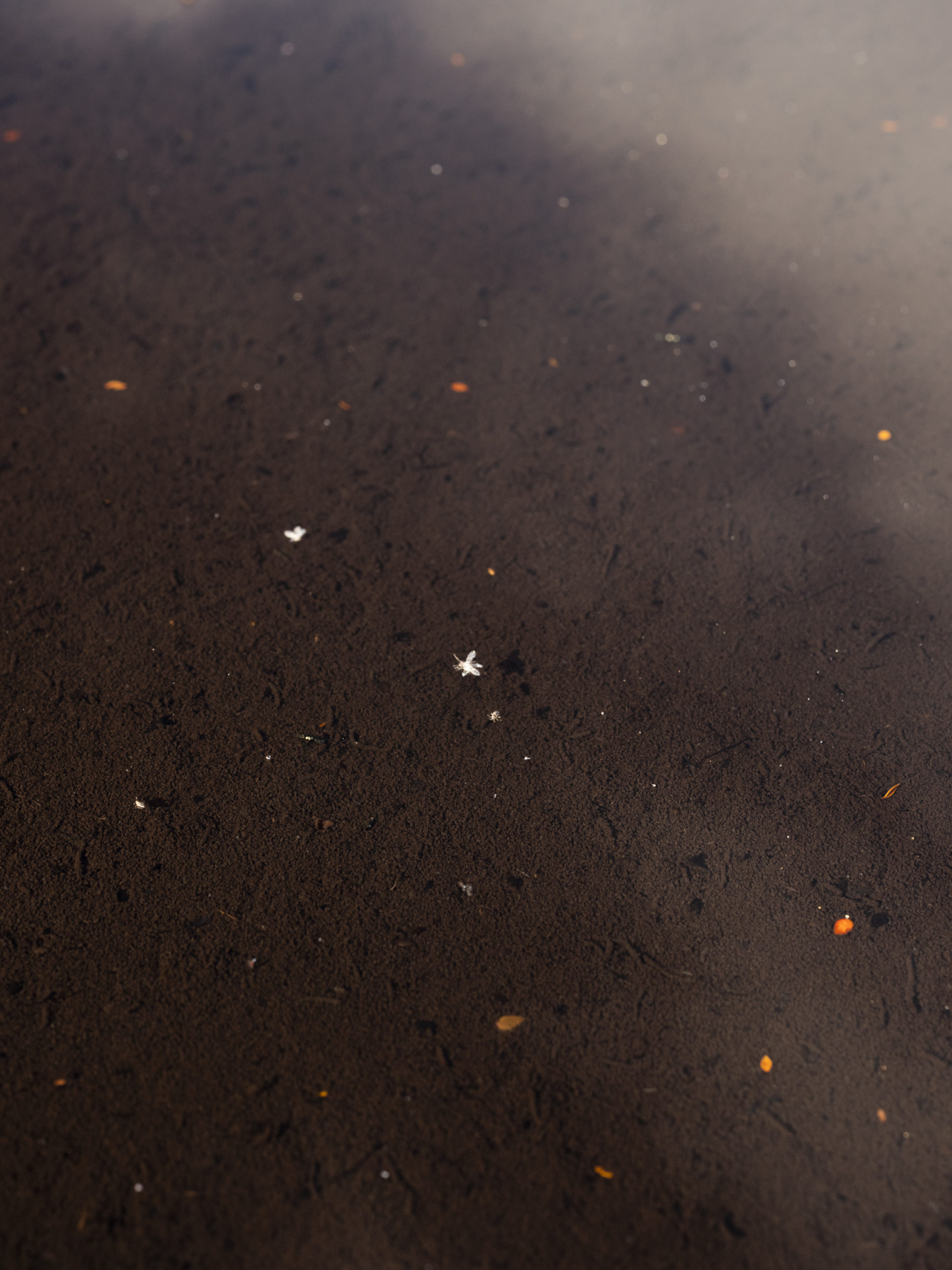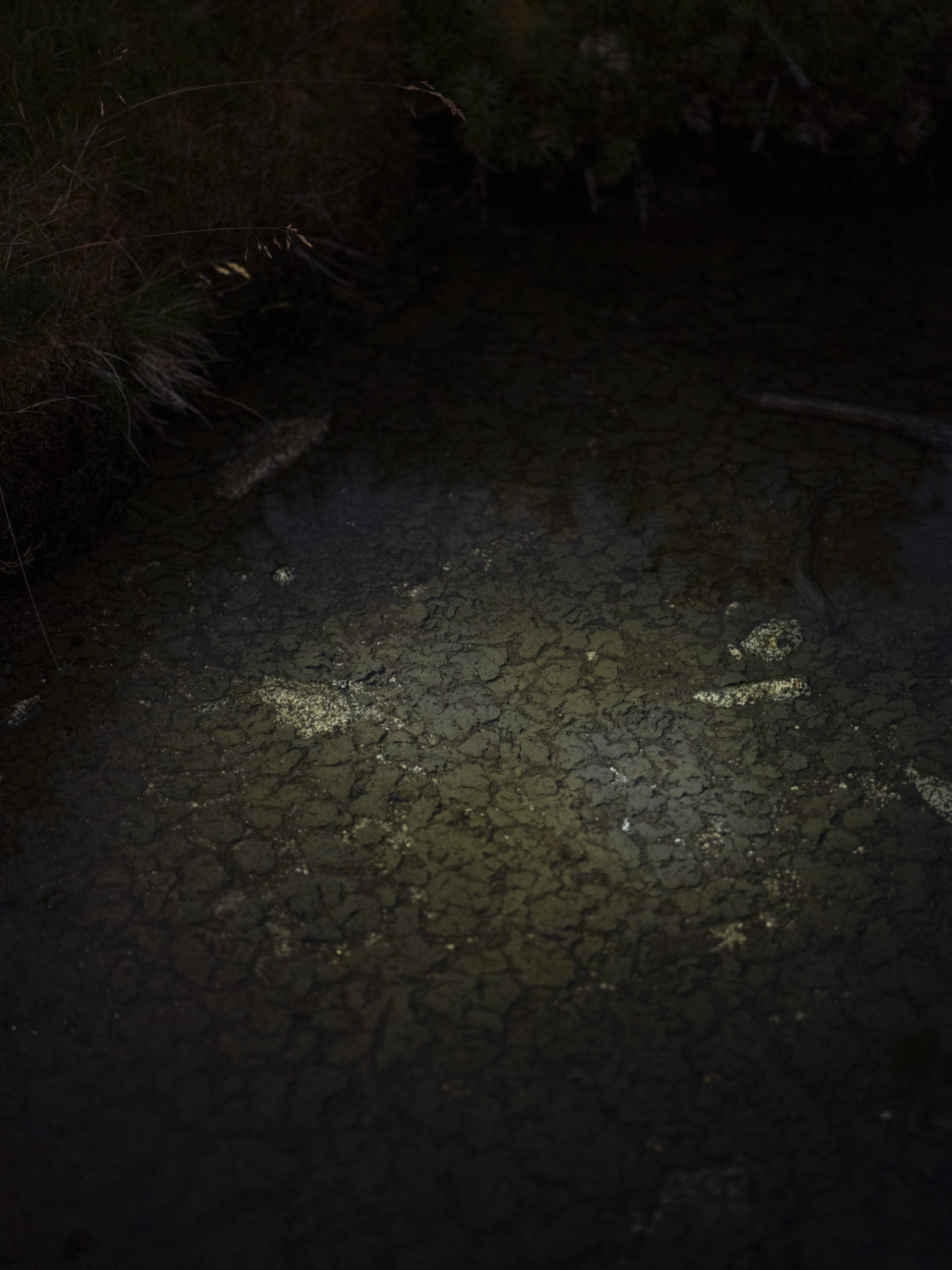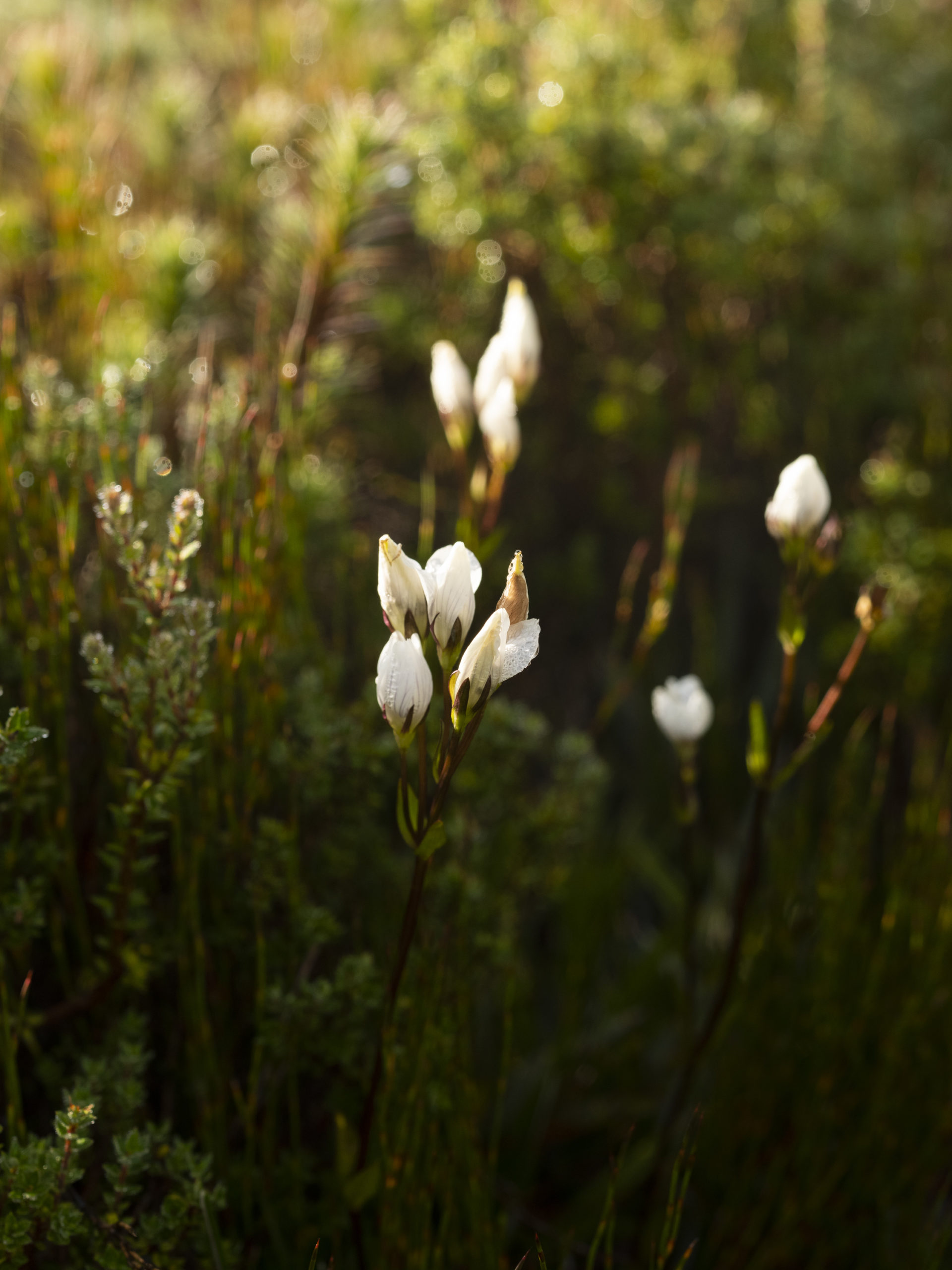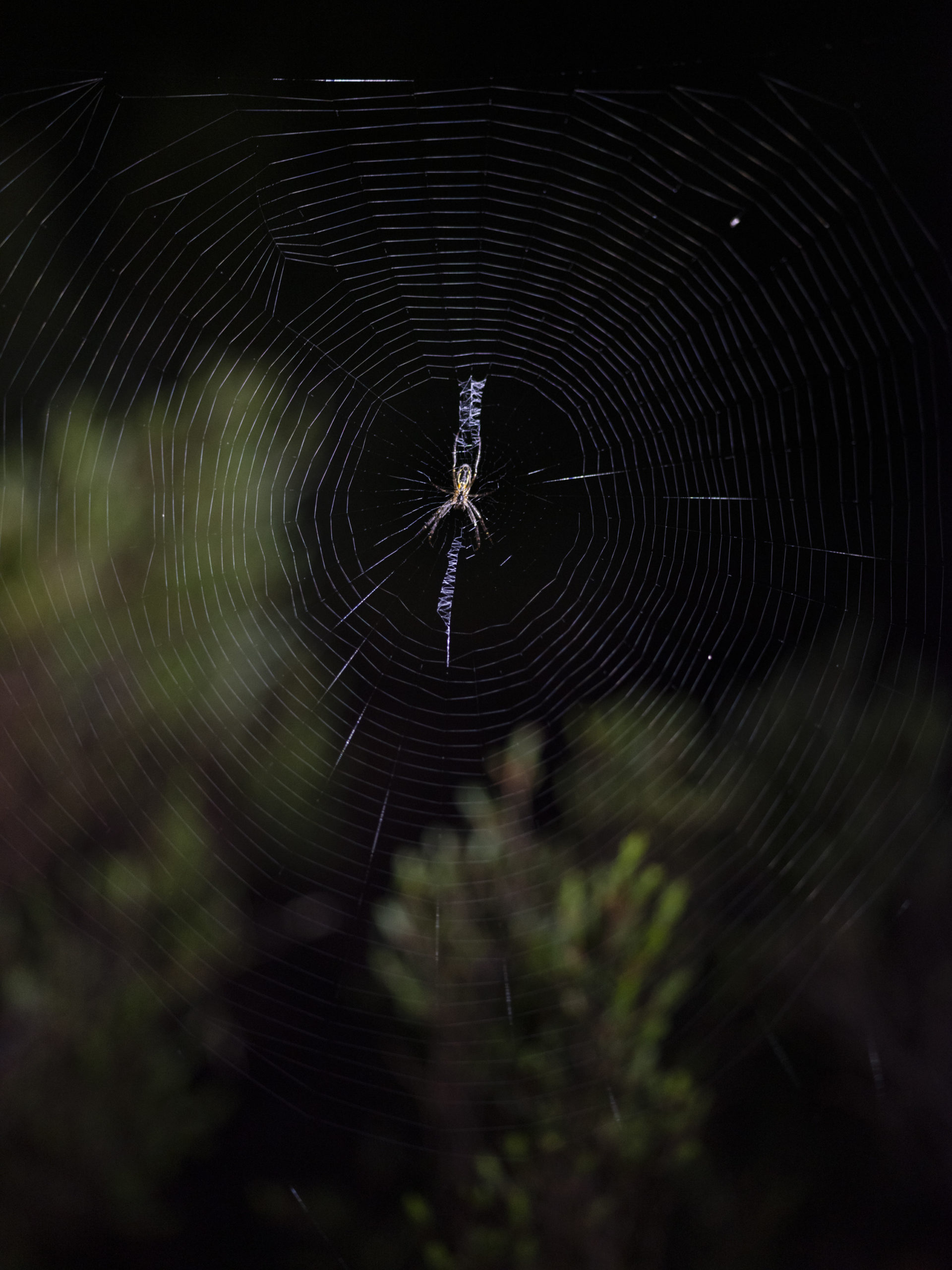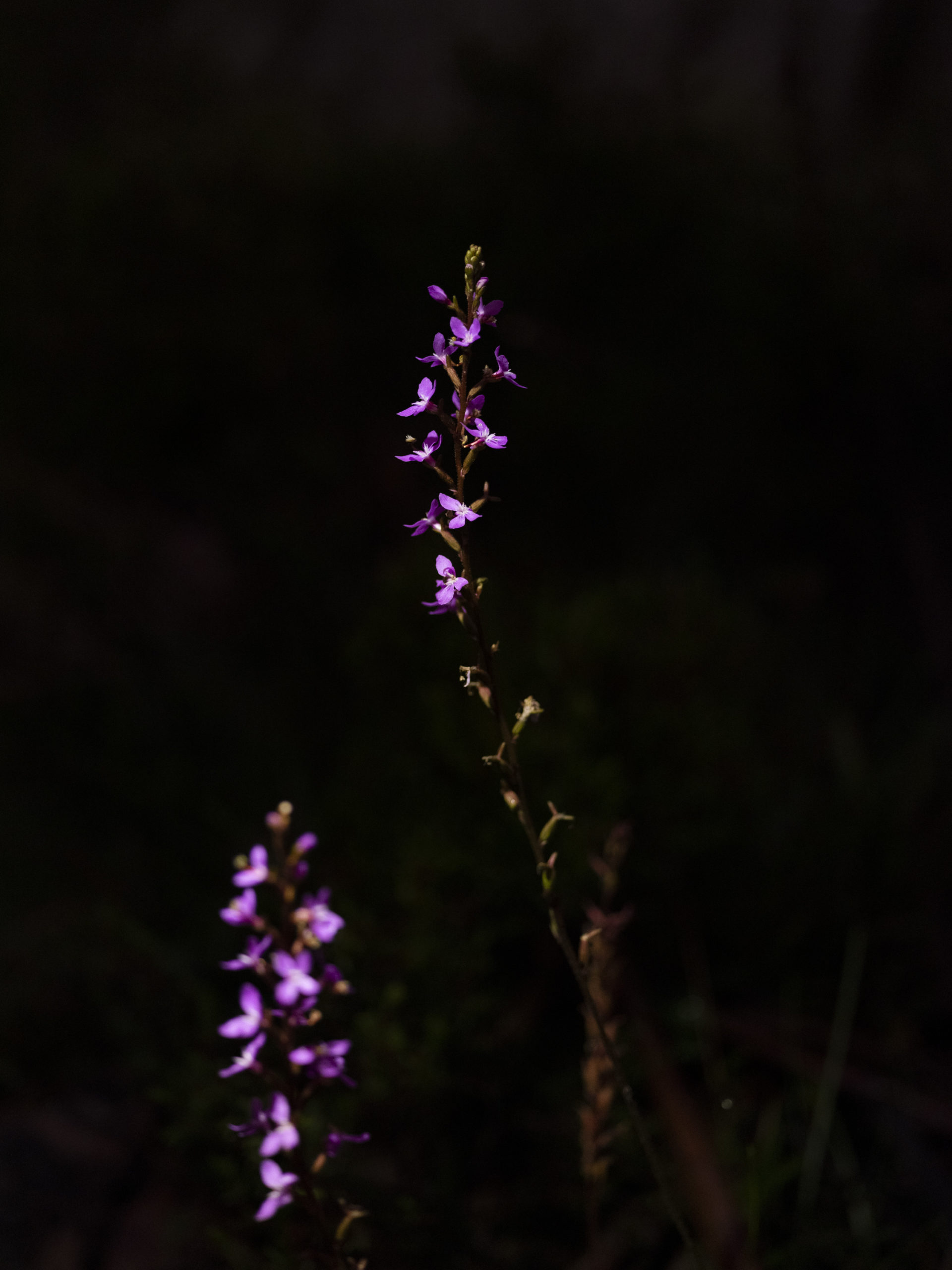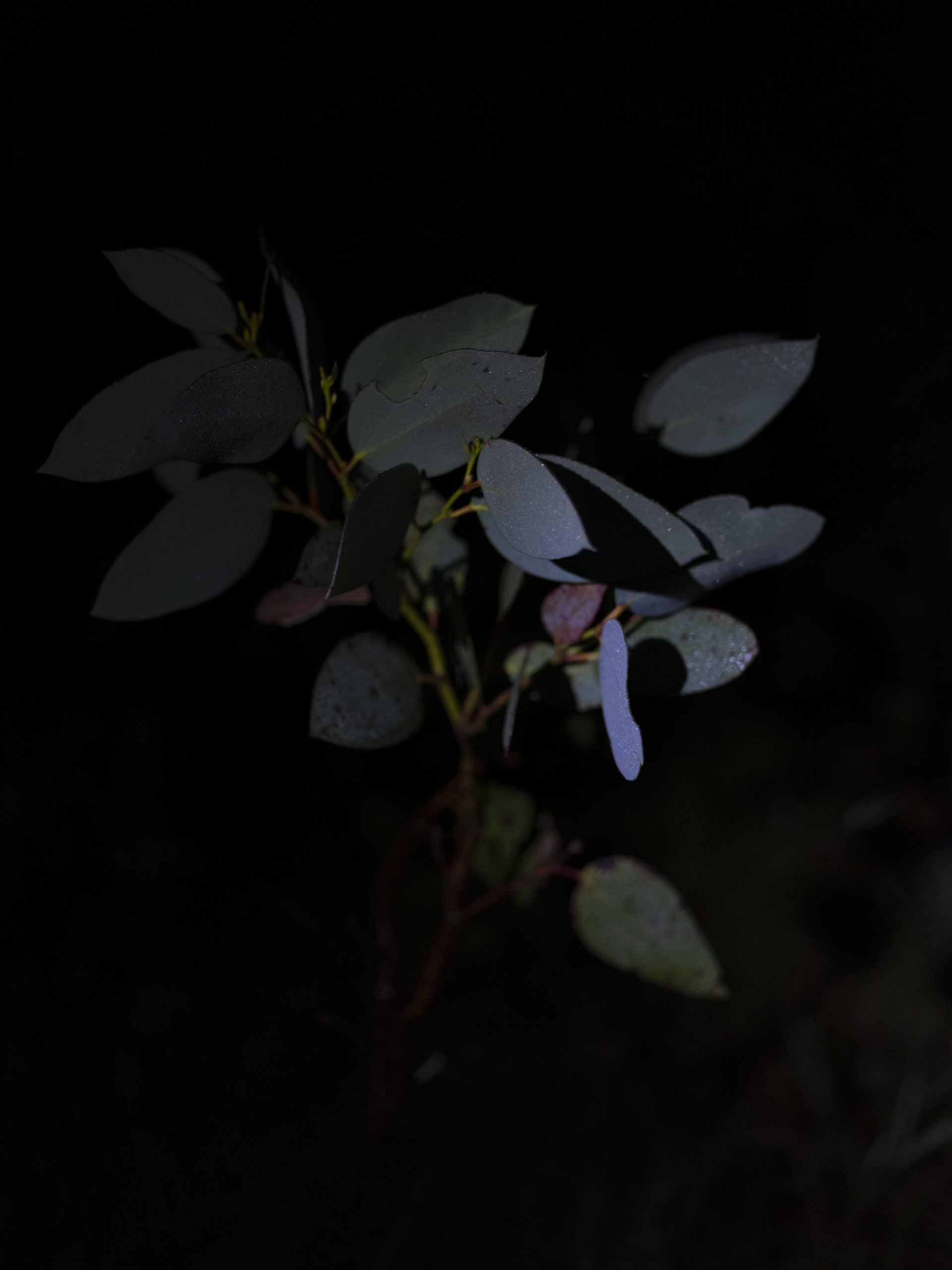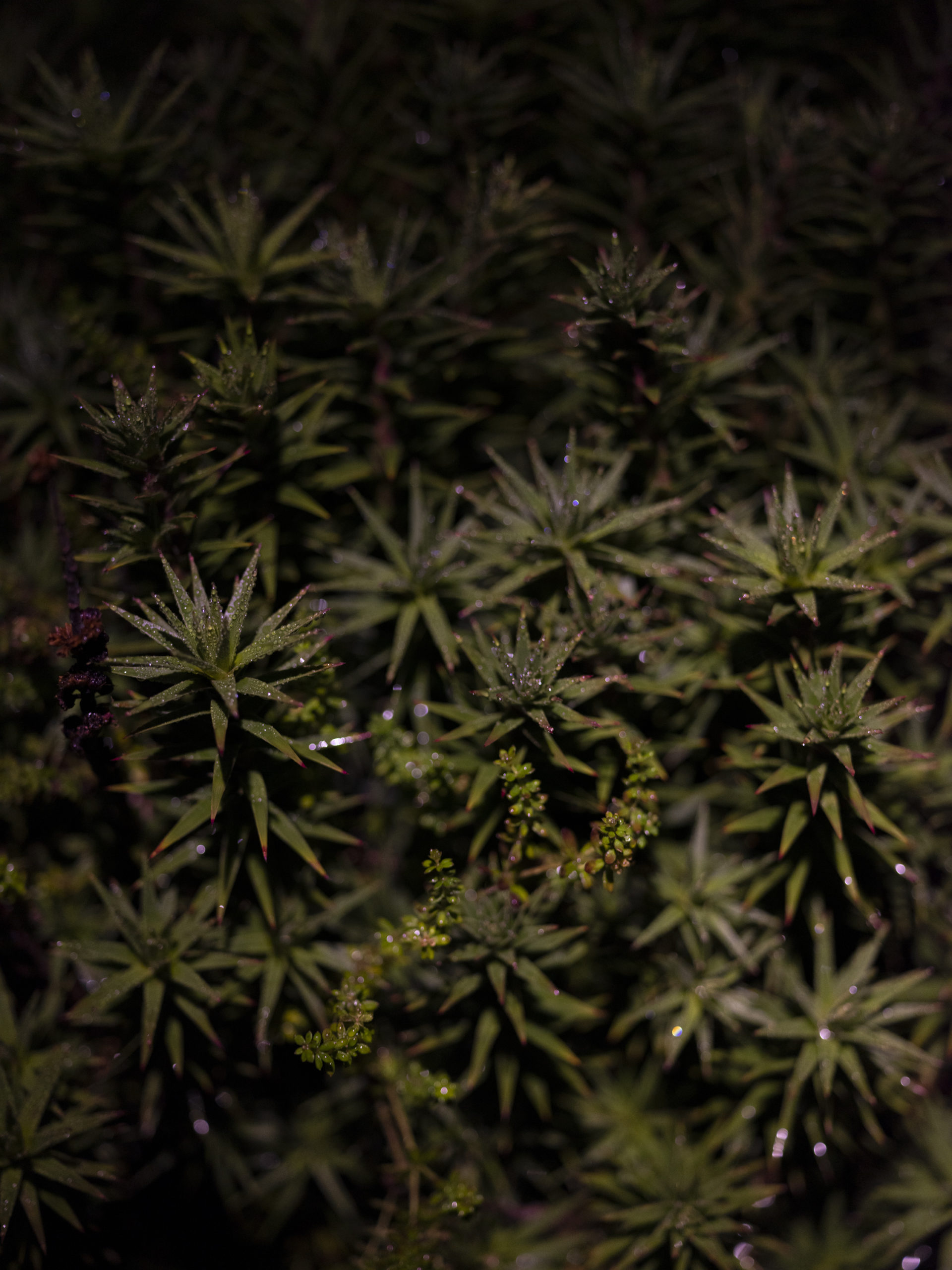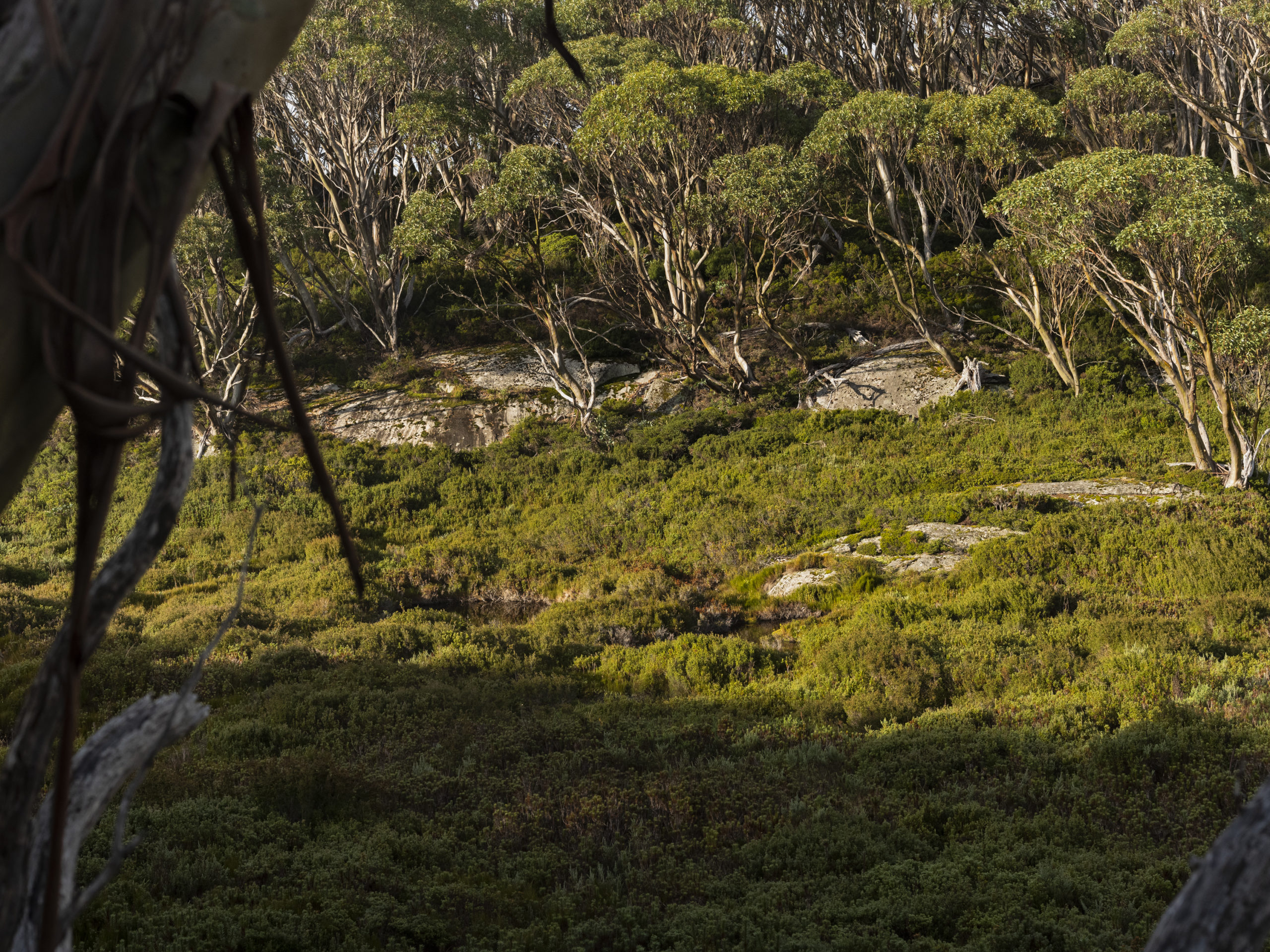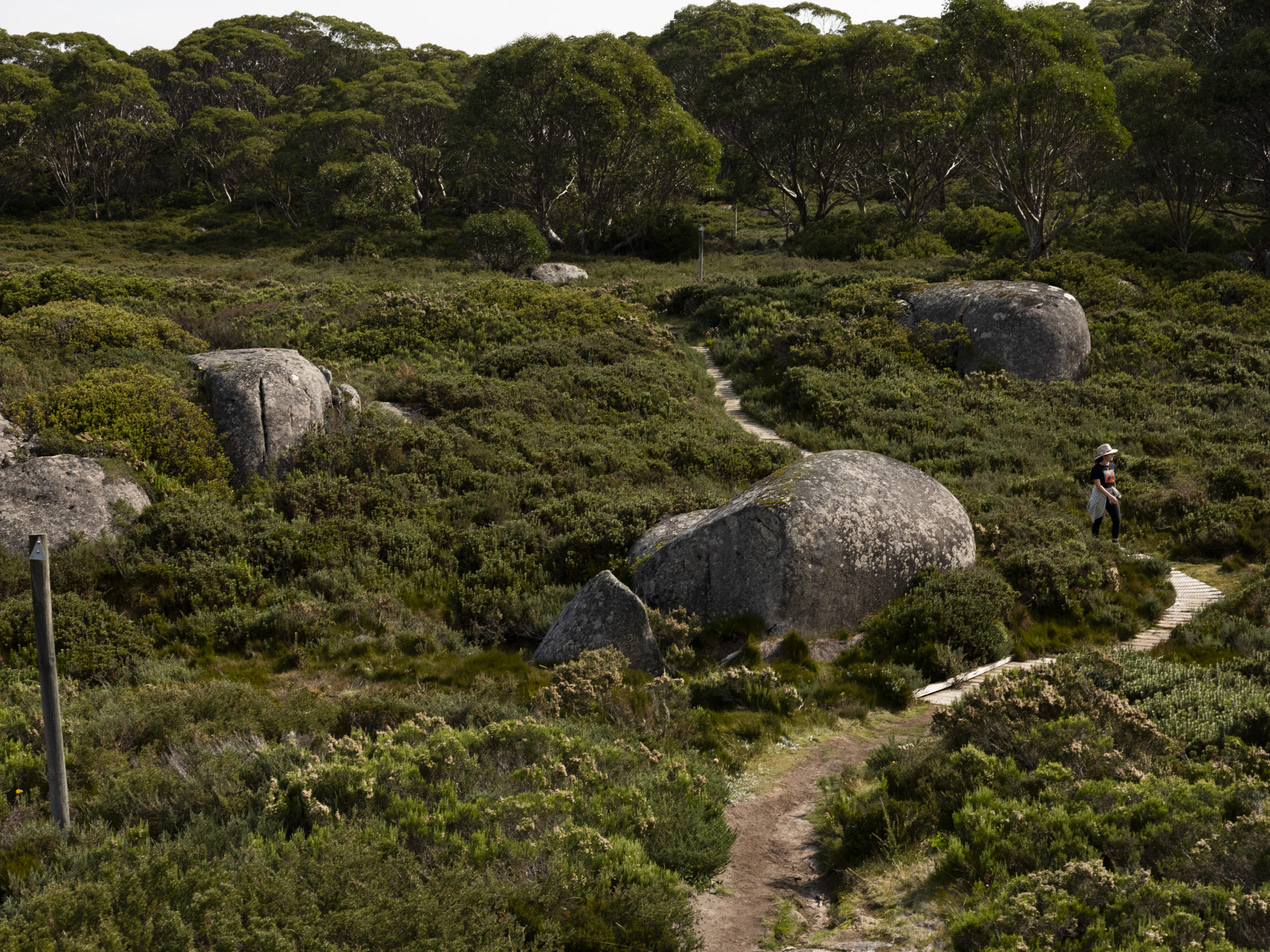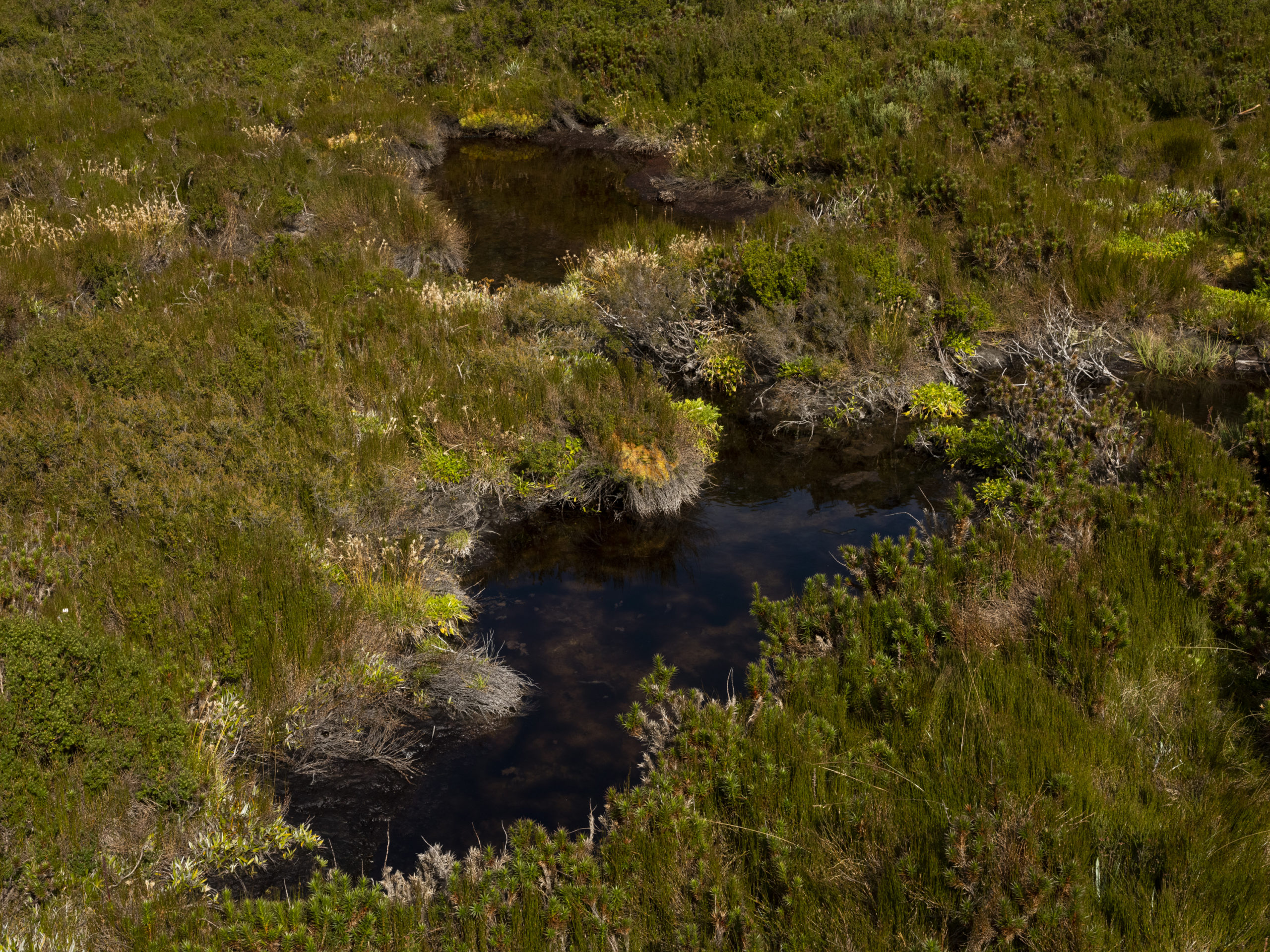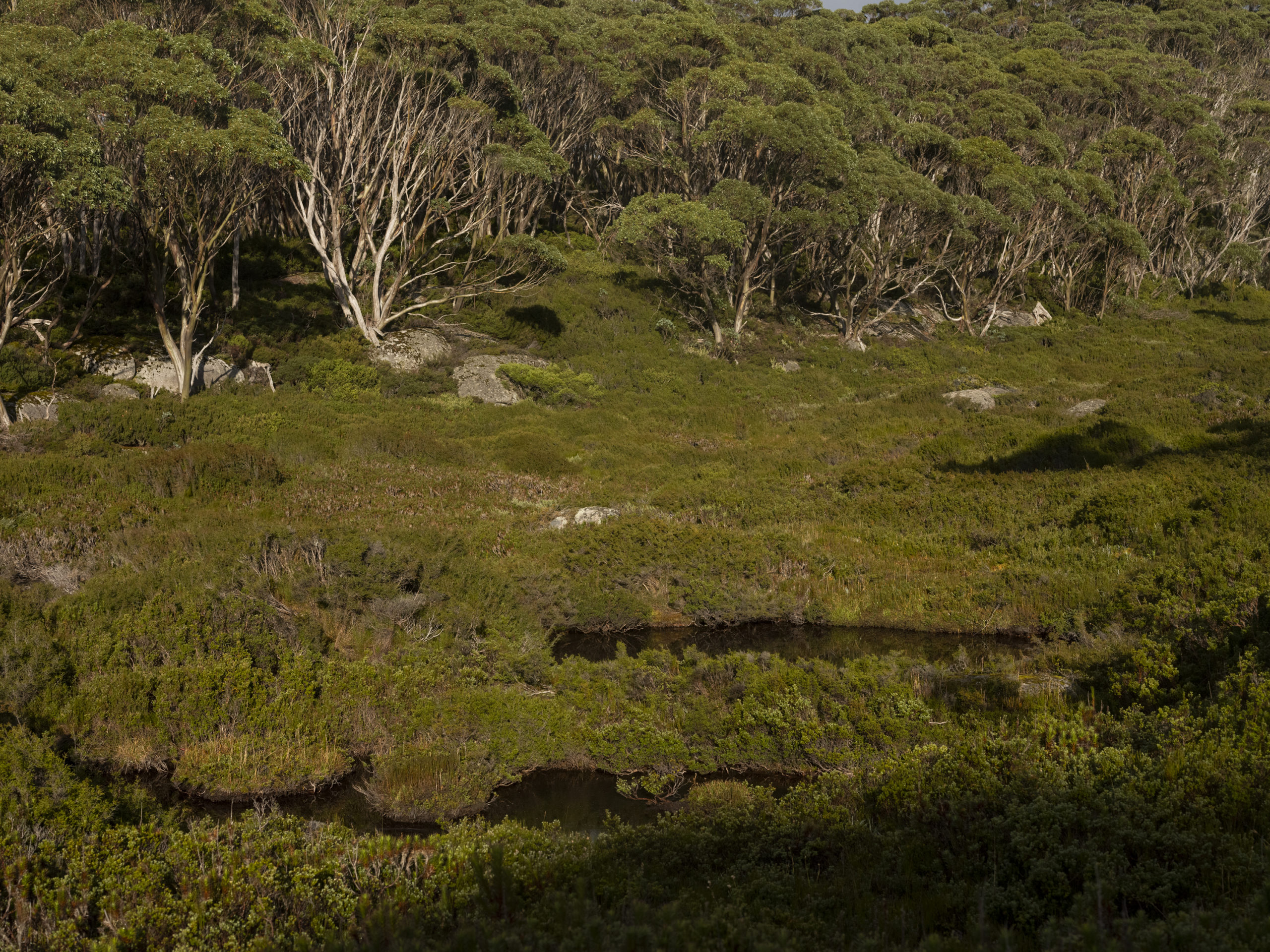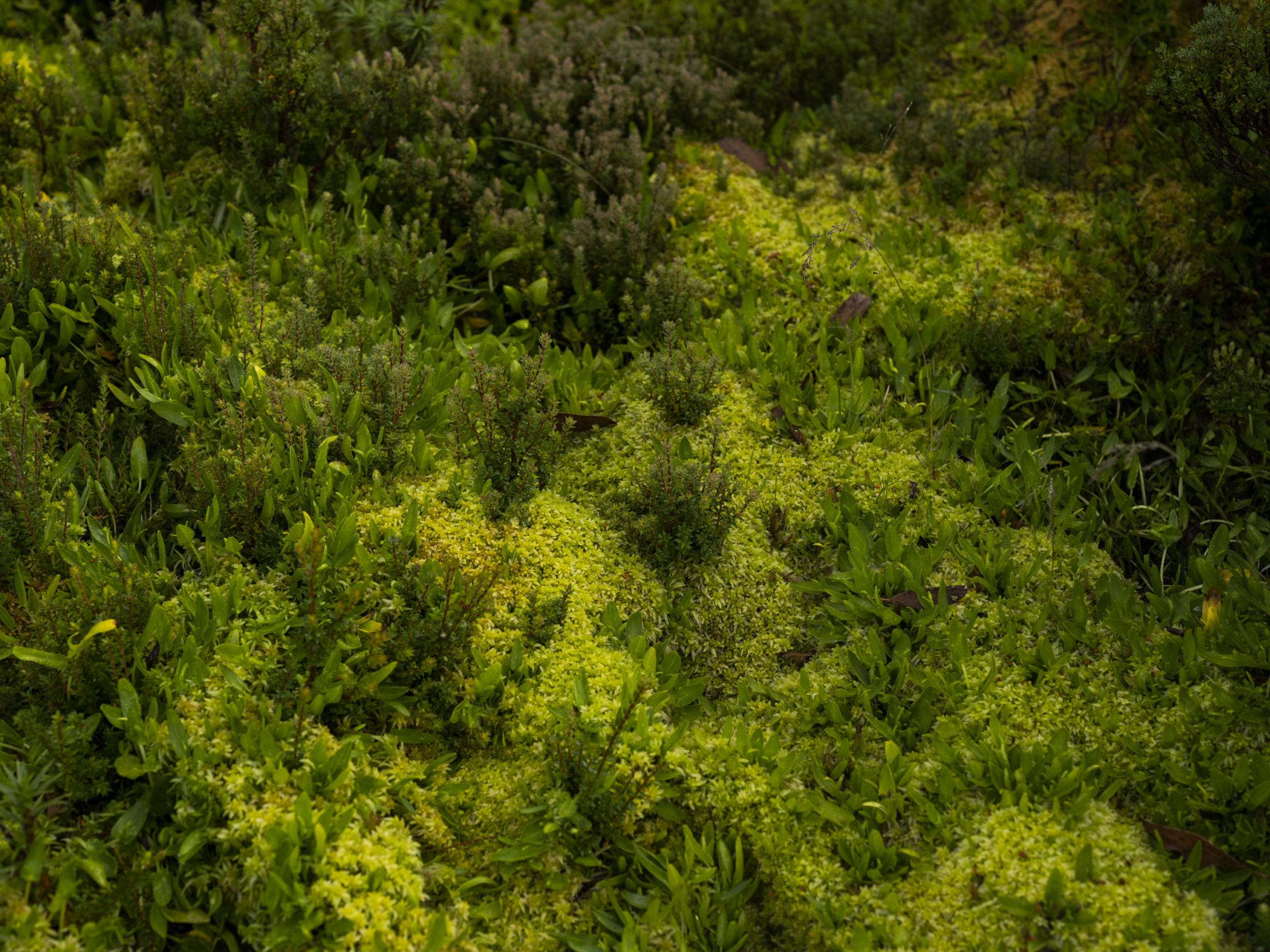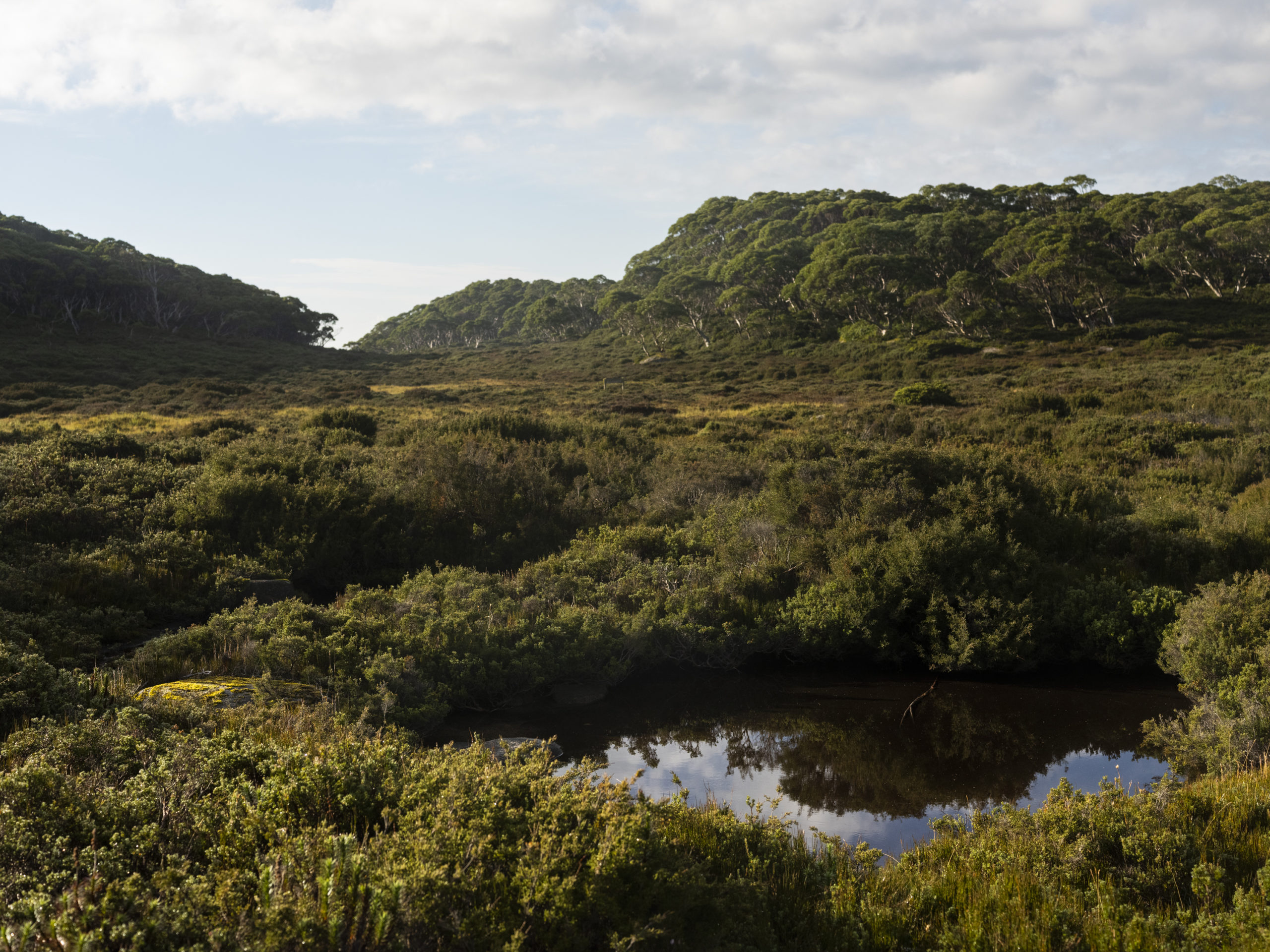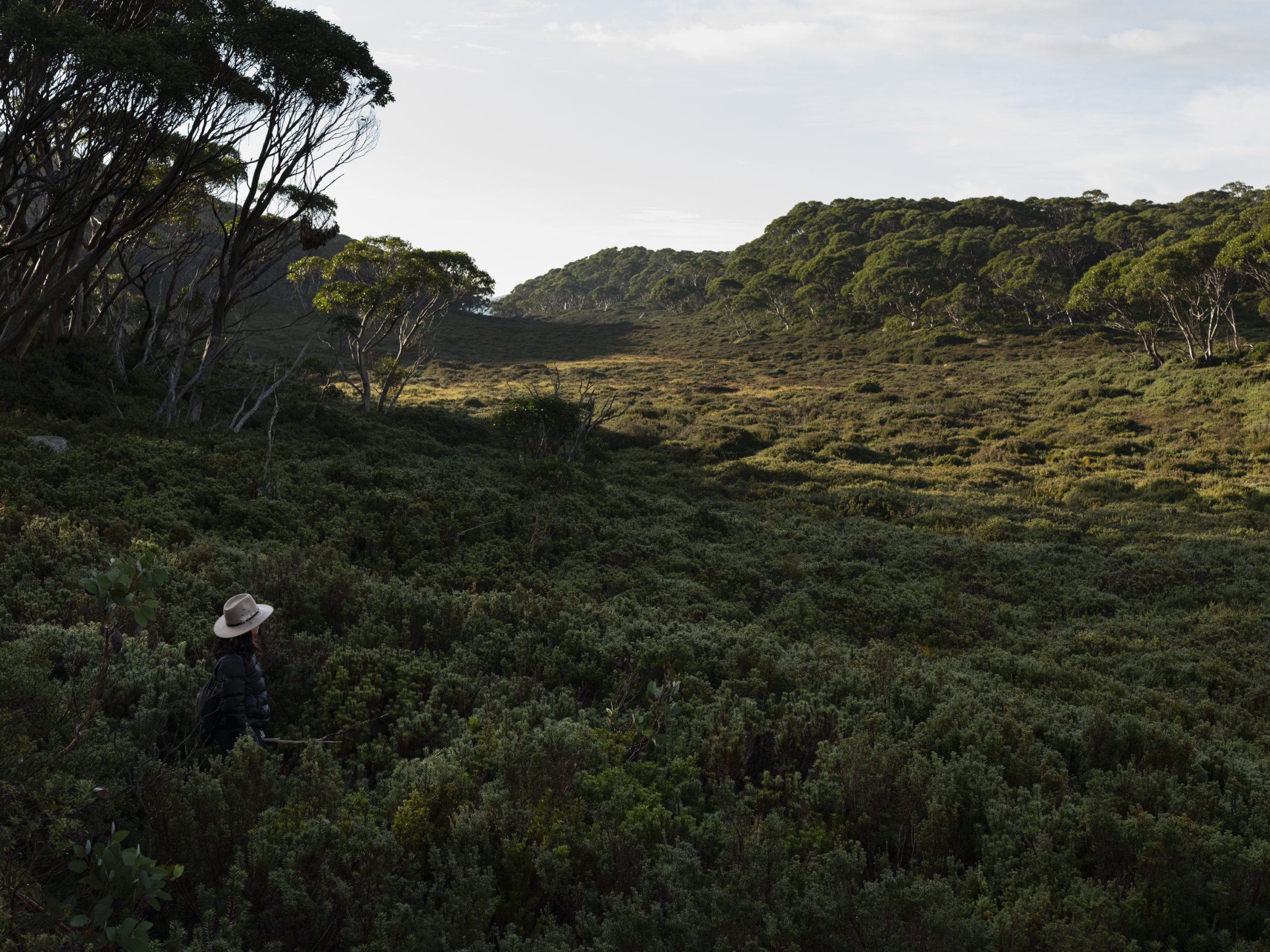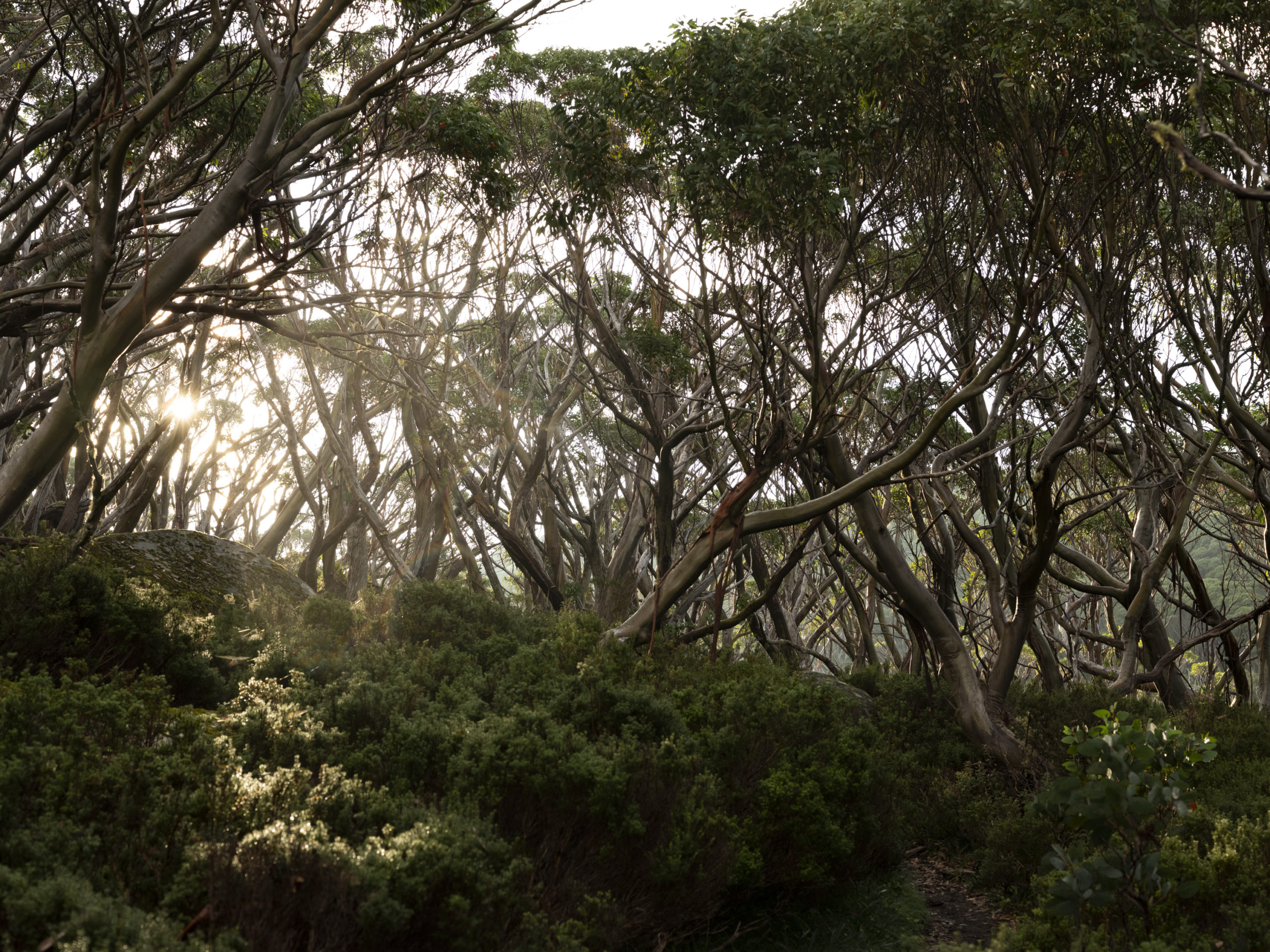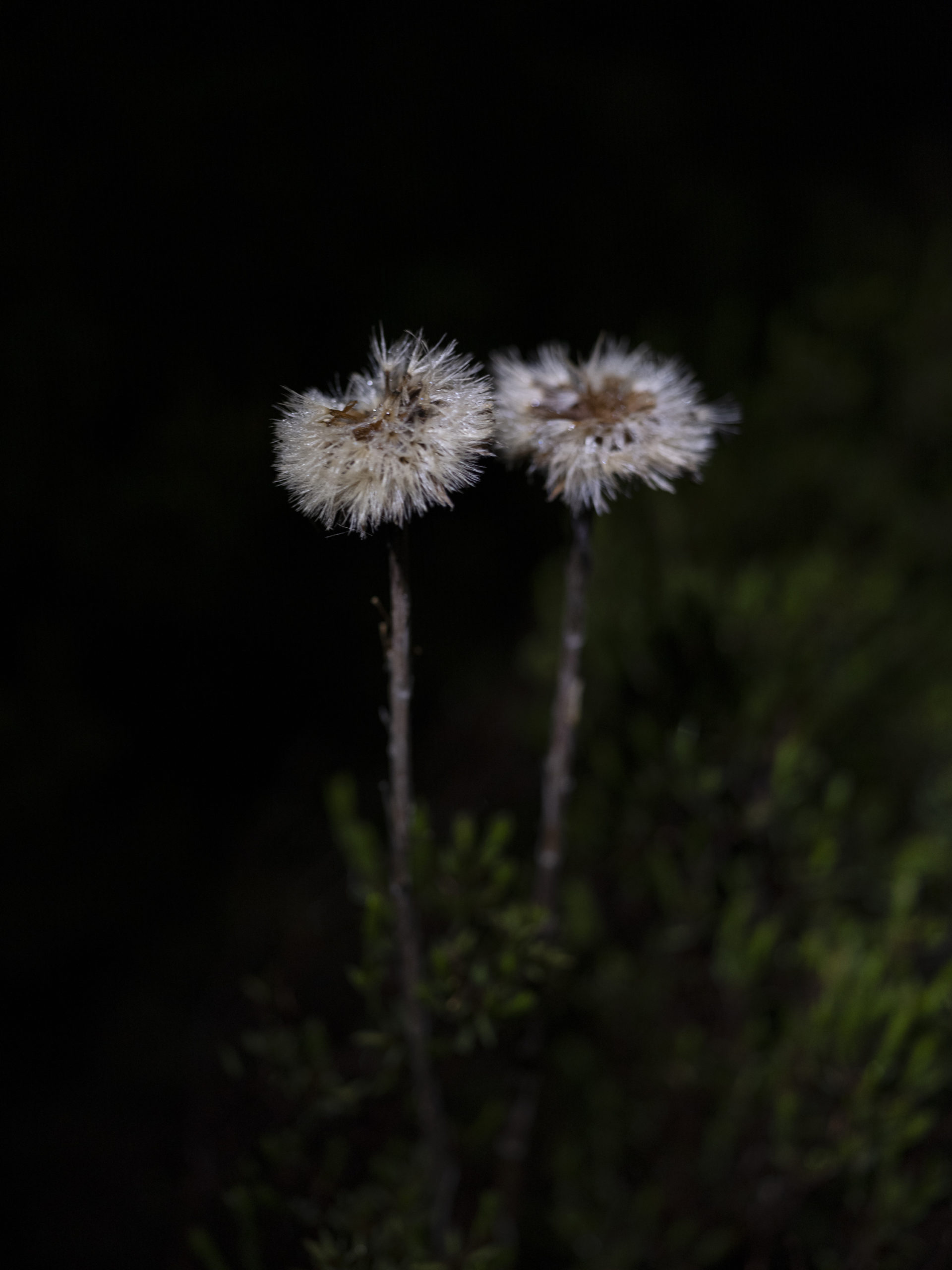Bogs are beautiful

High in the Victorian Alps, the Baw Baw Plateau is home to one of Australia’s most unique ecosystems.
It is here that dense, lush vegetation intertwines with bright green moss so thick only outcrops of granite rock can break through.
Dragonflies hover over crystal-clear pools of water, daisies reach for the sun, and if you listen closely you might hear the call of the endemic Baw Baw frog.
This is ‘Baw Baw bog’ – part of Baw Baw National Park in Victoria’s high country.
What is a bog?
A bog is a very specific type of ecosystem.
They are often referred to as peatlands or alpine peatlands, and while these terms are technically correct, “they’re just too generic,” says Dr Arn Tolsma, a senior scientist at Victoria’s Department of Environment, Land, Water and Planning’s Arthur Rylah Institute.
“A bog is a freshwater peatland that contains sphagnum moss,” Arn explains.
“The EPBC (Environment Protection and Biodiversity Conservation Act 1999) calls them ‘Alpine sphagnum bogs’ and that’s probably the best term to describe them.”
Alpine sphagnum bogs need a combination of a few things in order to form and thrive.
The most important thing is a plentiful supply of groundwater that keeps the soil saturated for most of the year.
“Bogs form along seepage lines on gentle slopes and along valley bottoms in south-east Australia’s alpine and subalpine zones – generally above 1000 m elevation – because that is where rainfall is high and there is a reliable source of groundwater,” says Arn.
When conditions are right, groundwater-dependent vegetation including sphagnum moss will grow, creating an alpine sphagnum bog.
Incredibly, the sphagnum moss then creates its own ideal living conditions.
“The moss forms deep hummocks that hold back the water and then helps maintain optimum conditions for its own growth – like a feedback loop,” says Arn.
“The sphagnum creates conditions that are highly acidic, low in nutrients, low in temperature, low in oxygen, and that depresses the growth of vascular plants and allows the sphagnum to dominate. So it creates conditions that suit itself.”
But while sphagnum moss may act in its own self-interest, the knock-on effects benefit the wider environment.
“Cold, saturated, anaerobic conditions slow down the decomposition of dead plant material, allowing this material to slowly accumulate under the bog as a layer of highly-organic peat, hence the generic name ‘peatland’. It’s estimated the alpine sphagnum bogs hold something like 200 tonnes of carbon per hectare so they are very important when it comes to carbon sequestration,” says Arn.
“Bogs also perform various hydrological functions… as well as provide habitat for a range of unique plant and animal species,” he adds.
Baw Baw bog
The Baw Baw bog is actually a collection of bogs which are a precious living example of alpine sphagnum bogs, says Daniel Brown, Parks Victoria’s Manager of Regional Planning for Eastern Victoria.
“They are in an area that’s really quite pristine,” he says.
Daniel explains the reason the Baw Baw area has remained so pristine is because the plateau hasn’t faced the same pressures that have affected many other alpine peatlands across Australia’s eastern states.
“They haven’t experienced the same grazing and invasive species pressures that we’ve seen in other parts of the Victorian Alps, there’s no large hydro schemes that have changed the hydrology like they have in other parts of the Alps, and there’s few roads, tracks, and other infrastructure compared to some of the others that are elsewhere,” Daniel explains.
The Baw Baw bogs are also not only protected by the national park, but by a Remote and Natural Area overlay, and an endangered ecological community listing, providing even higher levels of protection.
“So it’s really highly protected and they’re in really good condition,” Daniel says.
Another thing that makes the Baw Baw bogs so unique is that they haven’t been damaged by bushfires for many years.
“They’re probably the last bogs we have in Victoria that haven’t been burnt in the last 20 years or so,” says Daniel.
“Most of the rest of the Alps and the bogs were burnt in either the 2003, or 2006-07, or 2009 fires – or the recent 2019-2020 bushfires. Many bogs have even been burnt by more than one of these fires.
“The bogs on Mount Baw Baw haven’t been burnt since 1939 so that’s quite rare as well, it makes them very special.”
The unspoilt condition of these bogs also means the survival of many threatened plant species only found on the Baw Baw plateau or that are uncommon elsewhere, including mountain mitrewort, Baw Baw eyebright, creeping coprosma, Baw Baw berry, and lilac berry.
And, of course, the plateau is the only home of the Baw Baw frog (Philoria frosti).
“The bogs are also right at the top of our water catchments so they play a pretty important role in the hydrology in terms of filtering the water,” says Daniel.
“The peatlands on Mount Baw Baw are on the top of the catchment for Melbourne’s water supply… so they have a really important function.”
The future of Baw Baw
Because the Baw Baw bogs are in such great condition, conservation efforts in the area are all about keeping them this way, which means keeping everything else out.
“Over the last 15-20 years we have worked hard to eliminate willows,” Daniel says.
“They’re an introduced species, they can come in and change the hydrology and outcompete the native species. We’ve made great progress – there used to be quite a few up there but now finding a willow is like finding a needle in a haystack.”
Another threat is the sambar deer population. Not only do these introduced animals destroy vegetation, but they are also likely to transport a devastating fungus on their hooves and fur.
This chytrid fungus (Batrachochytrium dendrobatidis) is responsible for mass deaths in frog populations across Australia, and worldwide.
“Chytrid fungus is threatening many frog species across Australia, and the Baw Baw frog is particularly susceptible to it,” says Daniel.
“So, the willows and deer are both being kept at bay, and we want to keep those numbers low.
“It’s important to us – because the area is in such good condition and so pristine – that we keep our conservation programs going.
“These bogs are really special places.”
